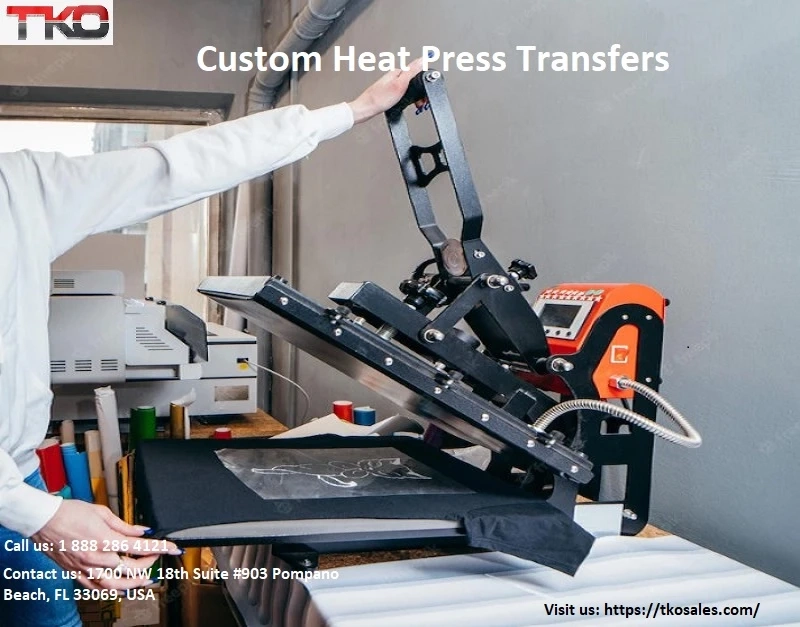Screen printing and heat transfer are some of the common choices for printing on garments. While both give the same final result in terms of appearance, they differ in technique and process. This brings in the question, which one is better? To answer this question, there are several factors. Cost efficiency, image durability, and image quality are the major determinants of the best. In addition to the advantages and disadvantages of both processes, the final design usually comes out differently. Therefore, customer preference is always vital. Here is a closer look into their differences to understand more what these processes entail and the best one to use.
What Is Screen Printing?
As the name suggests, it uses ink and screens to transfer an image onto a promotional garment. Screen printing has been around for decades, except its popularity began to pick up around the 1960s. You first need to cut the screen to create a design stencil to get the desired image. Afterward, the ink will spread over the screen passing through the stencil onto the garment underneath. The only drawback with screen printing is that you can only use one color on one screen. Therefore, dealing with multiple colors, you will need several screens.
The screen printing process is quite simple. However, it can be time-consuming, especially if you have several colors and garments to print. But with the help of a heat press for screen print transfers to help cure the inks. The best part about this process is that screen-printed images last longer than heat-press images.
Advantages Of Screen Printing
The final result has a softer feel on the fabric.The designs tend to last longer than other printing techniquesIt's quite cost-effective if you have a large quantity to printIt makes the colors more vibrant, even on darker fabrics.The Disadvantages Of Screen Printing
It's quite expensive to set up as it requires higher minimums; therefore, it's not ideal for small orders.It is limited to only simpler designs that have few color combinations.It uses more equipment and chemicals compared to the heat pressThe process is time-consuming and can be messy sometimesIt's not the perfect choice for photo replication.What Is Heat Transfer Printing?
This recent apparel printing innovation hasn't stayed in the industry for long. However, it has gained significant popularity over the years as it's quite simple. Heat transfer printing involves using heat and pressure to print images onto garments. It involves the use of two main methods; vinyl and digital print. But both methods use a heat press machine.
How Vinyl Heat Transfer Works
This method uses a machine to cut individual designs or letters out of colored vinyl. Afterward, the image is placed together onto the garment and pressed to transfer onto the item. It's the ideal printing process for sportswear, multi-colored graphics, slogans, or jerseys.
How digital Print Heat Transfer Works
You can easily accomplish digital heat transfer using a home printer. You only have to design the image you want on a computer and digitally print it on printing paper using special ink. Afterward, you place the design onto the t-shirt and use a heat press to transfer it. The resulting design is usually high resolution and best for more complex designs or multiple colors.
Heat transfer printing is ideal for small orders or those that require the use of several color combinations. However, you must have the best printer, paper, and heat press to achieve the best results. Here are some advantages of heat transfer printing;
It gives high-quality designsIt's more cost-effective for small ordersThe setup is relatively affordablePrinting images with several colors or complex designs are quite easyIts environmentally friendlyThe Disadvantages
The resulting design usually gives a stiffer feel to the fabricIt's not the ideal printing method for darker-colored garmentsThe final colors aren't usually as bright as with custom screen print transfersThe designs don't usually last longer than those of screen-printed transfers.How Is The Quality Of Screen Printing Vs. Heat Transfer Printing?
To determine the quality of garment printing, there are several factors to consider; image resolution and durability are the main ones. With heat press printing, the final image is usually of high resolution. But, unfortunately, the image usually lasts longer than screen printed transfer. This is because the ink seeps in during custom screen print transfer and becomes part of the fabric. On the other hand, with heat-press transfers, the ink sits on top of the fabric.
Another thing to note is that while screen-printed transfers give the best image quality, you cannot get complex designs with this process in the long run. On the other hand, heat-pressed images give more room for sophisticated designs and a more vibrant look.
Which One Is Better?
The best printing method will depend on your individual needs, the needs of your customers, and what you want to achieve. For example, if you have a complex color design, heat transfer is the best; screen printing is the best if you have a larger order.
With this information, it's now easiest to devise a printing method for your business. Remember, the first step to getting the best designs or images is getting high-quality equipment. Always do research and ensure you get the best equipment for quality results.
0


